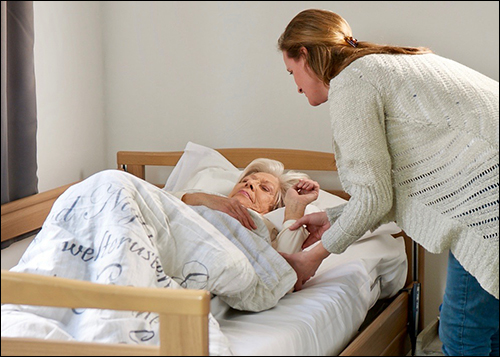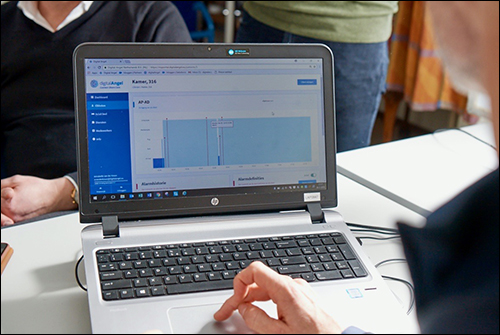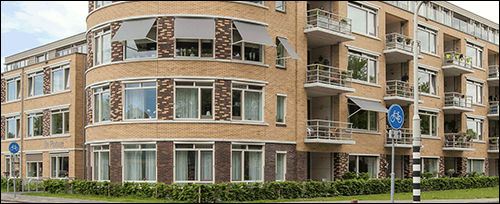Carehome Zorgspectrum, located in Nieuwegein, the Netherlands, is one of several European care facilities deploying an Internet of Things (IoT) system that detects the well-being of patients by capturing sensor-based data from patient mattresses. The solution makes that data available to management and health-care providers, while also offering the possibility of connecting to a company’s existing software-based data.
The system, which automatically tracks when patients leave their beds, as well as how often and when they turn over, is provided by digitalAngel and is built with the support of its local partner, Dutch platform integrator Nalta. Dell Boomi, an independent unit of Dell Technologies, accesses digitalAngel’s data through its cloud-based software platform. The Boomi platform is being used as an integration-platform-as-a-service. DigitalAngel’s solution, powered by Boomi’s technology, was piloted last year until around September, and has since been permanently deployed at Carehome Zorgspectrum.
For long-term patients isolated in beds, care providers need to keep an eye on their movements during the nights. To avoid developing bed sores, patients need to roll at regular intervals, such as every few hours. Without the IoT system, care providers cannot be sure whether or not a patient has rolled over, and thus often go through the process of rolling each patient over every three hours, whether or not they need to be moved, so as to ensure that they don’t develop lesions.
This is not only time–consuming and laborious for staff members, but disturbing for patients who are sleeping and may not need to be rolled over. In some cases, in fact, a patient may have just turned over, and employees may inadvertently roll a patient back into a position in which he or she had remained for several hours.
Netherlands-based digitalAngel was launched in 2017 to develop and provide a system that would connect data collected from intelligent care products in hospitals or nursing homes on a cloud-based platform. The aim, says Peter de Lange, digitalAngel’s managing director and co-founder, was to create a solution that would benefit both patients and caregivers—something, he says, that would “increase the quality of life of patients and increase the well-being of care professionals.”
DigitalAngel began working with Nalta to create a solution that uses Salesforce, Microsoft Azure and Dell Boomi to manage data collected from sensors, according to Mike Veldhuis, a Nalta partner. The firm launched in 2000 as an IT company that provides consultancy, systems integration and software development.
The two companies brought in Dell Boomi to provide the connectivity platform on which data could be shared and managed for use by hospitals, nursing homes or care providers. With Dell Boomi, digitalAngel can connect all sensor-based products and platforms, such as a care provider company’s electronic patient records, says Pragnya Paramita, Dell Boomi’s product marketing manager. Whether in health care or another industry, Paramita says, “It all boils down to connectivity to enable the processing of data.”

The current solution has two features: the collection of data related to the rolling over of patients as they are in bed, and indications of when those patients actually leave their beds. Both features are intended to prevent injuries or health problems in patients, while freeing up the time of care providers.
The mattresses come with three pressure sensors built in. When a patient lies on a mattress, the sensors identify the pressure of that individual and transmit that data to software on a cloud-based server, via a Wi-Fi gateway. DigitalAngel’s system, using Nalta’s software integration, collects the sensor data according to the business logics of the mattress manufacturer, then interprets the data and determines the position in which the patient is lying—on the left or right side, for instance, or on his or her back or front—based on how weight is dispersed across the mattress. The sensors continue to transmit their data, which is collected and made available to the hospital or care facility. When a patient rolls over, the system detects that change.
Carehome Zorgspectrum and other care facilities can link each mattress to a particular patient to which that mattress is assigned, as well as to a personal care plan that leverages data from the mattress. Upon arrival, a new patient is assigned a mattress. The unique ID numbers of that mattress and its sensors are then linked to that patient.
Based on the care plan, the system can be set at different frequencies to issue alerts if that person needs to roll over. One patient may need to roll over every three hours to prevent bed sores, while another may have a shorter or longer period in which he or she can remain stationary.
The other problem the digitalAngel system is intended to solve is that of wandering patients. If care providers are unable to detect when a patient—especially one suffering from dementia—leaves a bed, that individual could be vulnerable to injury or to becoming lost. Some facilities use an infrared (IR)-based system, by which IR sensors are installed on posts on either side of a patient’s bed. If the patient rises, he or she breaks the IR signal and an alert can be sent.

However, de Lange says, such a system could detect the rising of a patient who then simply lies back down, which would lead to false alarms. Over time, these false alarms can cause staff complacency. But with the digitalAngel solution, he notes, the sensor-based data enables the software to determine when a patient has not only risen, but actually left the bed, and to then issue an alert to authorized parties based on the individual patient’s settings.
The solution comes not only with a management portal, but also with a digitalAngel app that could be downloaded onto an Android or iOS device. With the app, caregivers can view data with their mobile device and input their own data, such as indicating when they responded to an alert, or when they rolled a patient over.
The beds are not mobile. The mattress’s gateway device forwards sensor-based data periodically via the Wi-Fi system. Caregivers can view each patient’s status in real time, based on the sensor readings, and thereby determine who needs to be rolled over, and when. They can also receive alerts in the event of a patient leaving his or her bed.
In addition, the technology enables analytics on the collected data. The software provides users with more information about how treatment takes place on a daily basis, and can compare that information with health outcomes. “The biggest problem in care homes is they are using single-connected products,” de Lange says—siloed solutions that do not interconnect. That could include systems such as blood pressure monitoring, each stored independently.
According to De Lange, digitalAngel works with major bed and health-care furnishing manufacturers to ensure that the sensors built into their intelligent products can then talk to the digitalAngel system. With the Dell Boomi network, Paramita says, data could be managed on premises or in the cloud.
To date, de Lange says, the system has reduced the amount of time staff members spend rolling bedridden patients by an average of 30 to 50 percent, which can be used to give more attention to patients who are in need of it. There has been a reduction in patient sores as well, he reports, based on the pilot results. In the future, the technology may be used with moisture sensors to help users detect incontinence in a bed-ridden patient. The system could also be applied to scooters, to track when an individual takes one out. It could then share that information with patients or caregivers, so that they can join those already using scooters, and thus boost social interaction.
The system will only employ sensors on medical devices and furnishings, de Lange says, rather than on the patients themselves, as a means of protecting the patients’ privacy. “In some care homes, companies are using wristbands, or cameras in rooms,” he states. “What we feel is important is that patients feel at home,” with the dignity of some personal privacy.
According to Veldhuis, the system is intended to solve health-care-based problems, rather than to introduce technology to which health-care providers must then adjust. “There are a lot of companies trying to provide something from a technology point of view,” he says. “What we’ve done is to provide technology that’s specifically adapted to the health-care market.”





